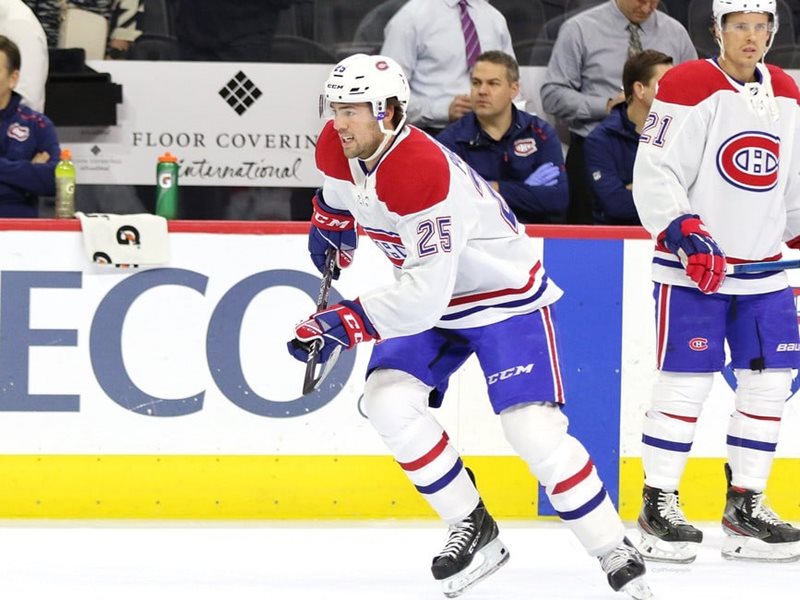
 Jesse Zhang
The Hockey Writers
Jesse Zhang
The Hockey Writers
26
Reads
0
Comments
Craig Anderson’s Stick Handling Conundrum
Craig Anderson has been steady to varying for the Ottawa Senators since the team acquired him seven seasons ago. This season, despite his personal challenges, he posted strong numbers and is standing tall in the playoffs. Although he occasionally allows a bad goal, he often makes important saves at key moments to give the Senators the edge in tight games. He may not receive credit as one of the league’s top netminders, but he provides Ottawa with strong performances that enable them to compete with other teams.
If there is one thing about Anderson’s game that drives Senators fans crazy, it’s his stickhandling; particularly when he leaves his crease to play the puck. It often seems like he’s going to give it away to the opposition, leaving them an open net to score on.
An Art Form
For goaltenders, stickhandling is a skill that doesn’t come easily to many. In order to puck-handle well, a goalie must shift their frame of mind from concentrating on blocking a shot’s trajectory to retrieving it and sending a pass. The goaltender needs to be additionally aware of his surroundings and be careful of his decision. If done right, the play can be fairly unnoticeable; done wrong, it ends up on the night’s highlight reel.
The most dangerous player for a goaltender out of his crease is the opposing forechecker; as it’s the forecheckers job to force the puck carrier to rush his decision on the pass. Some goaltenders are more comfortable playing in that kind of high-pressure moment. Others either panic or take too long and run out of time to make the smart play. Anderson has often fallen into the latter category.
Looking at how he attempts to make those plays, it is clear Anderson lacks the ability to do a couple of specific things well. First, when he receives the puck, he usually fails to have a full understanding of his surroundings. A goaltender should analyse the positions of his teammates and the opposing forecheckers to properly determine if he should play the puck. Second, if he does properly figure out his surroundings, his passing ability often fails him.
Add in a lack of communication with his teammates, the results are the potential disaster that ensues.
Puck Handling – the Costs
In the Senators’ first loss in the series against the Rangers, Anderson allowed a goal after failing to handle it properly. It didn’t have a huge impact on the final score, as it ended 4-1, but it added to a trend we began seeing in March.
In an important regular season game against the Flyers, he made a gaffe behind the net that made a difference. In that game, he took the blame for the loss. Then in the first round series against the Bruins, he did it again, leading to Erik Karlsson infamously yelling at teammate Derick Brassard. Anderson did not have to say much on that one because the Senators won that game.
The big game-two win for the Senators almost never happened as Anderson made another error behind his net. Teammate Kyle Turris made a strong play to prevent a Rangers forward from tapping the puck into the open net in overtime.
On the goal by the Rangers, Anderson shrugged it off as a play that happens on occasion. But it isn’t something that his teammates don’t appreciate even though they will never shove the blame on him. He will need to decide whether he continues taking risks out of his crease, especially if the Rangers plan to use this weakness against him.
Senators in Trouble?
After a 2-0 series lead, the Rangers have tied the series going back to Ottawa. Though the Senators deserve plenty of credit for starting the series strong, the Rangers have found their game at home and outplayed the Senators. Even taking Ottawa’s first two wins into consideration, the Senators have only led the series for a total of 4:11. While their two victories only had one goal of separation in each, the Rangers’ wins came in more overwhelming fashion. With the momentum shift, the Senators may need to make drastic changes in order to retake the series.
Popular Articles

















































 Blackhawks Chicago
Blackhawks Chicago Panthers Florida
Panthers Florida Penguins Pittsburgh
Penguins Pittsburgh Rangers New York
Rangers New York Avalanche Colorado
Avalanche Colorado Kings Los Angeles
Kings Los Angeles Maple Leafs Toronto
Maple Leafs Toronto Bruins Boston
Bruins Boston Capitals Washington
Capitals Washington Flames Calgary
Flames Calgary Oilers Edmonton
Oilers Edmonton Golden Knights Vegas
Golden Knights Vegas Flyers Philadelphia
Flyers Philadelphia Senators Ottawa
Senators Ottawa Lightning Tampa Bay
Lightning Tampa Bay Islanders New York
Islanders New York Sabres Buffalo
Sabres Buffalo Red Wings Detroit
Red Wings Detroit Devils New Jersey
Devils New Jersey Hurricanes Carolina
Hurricanes Carolina Stars Dallas
Stars Dallas Jets Winnipeg
Jets Winnipeg Blue Jackets Columbus
Blue Jackets Columbus Predators Nashville
Predators Nashville Wild Minnesota
Wild Minnesota Blues St. Louis
Blues St. Louis Mammoth Utah
Mammoth Utah Sharks San Jose
Sharks San Jose Ducks Anaheim
Ducks Anaheim Canucks Vancouver
Canucks Vancouver






